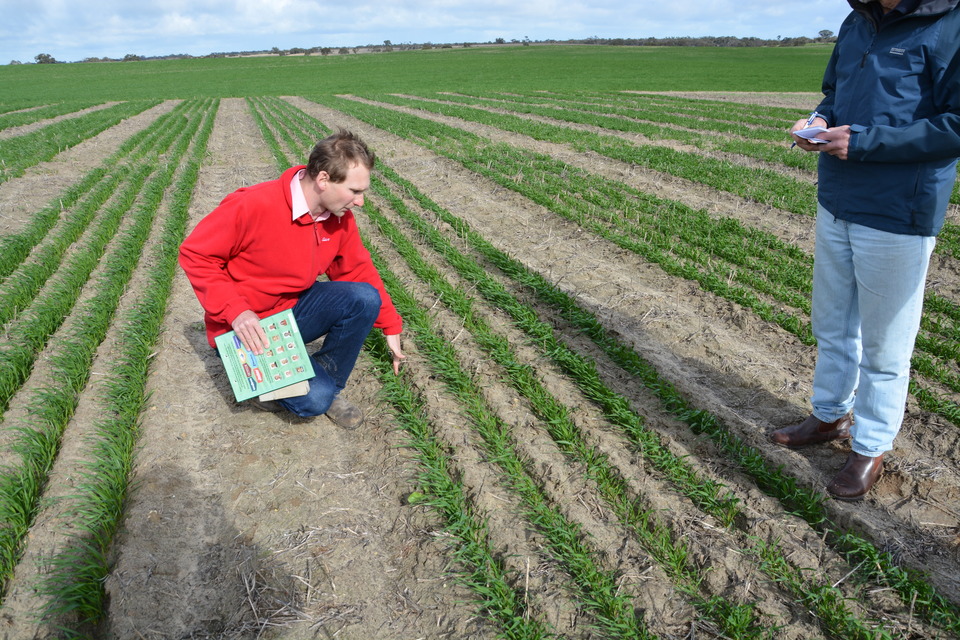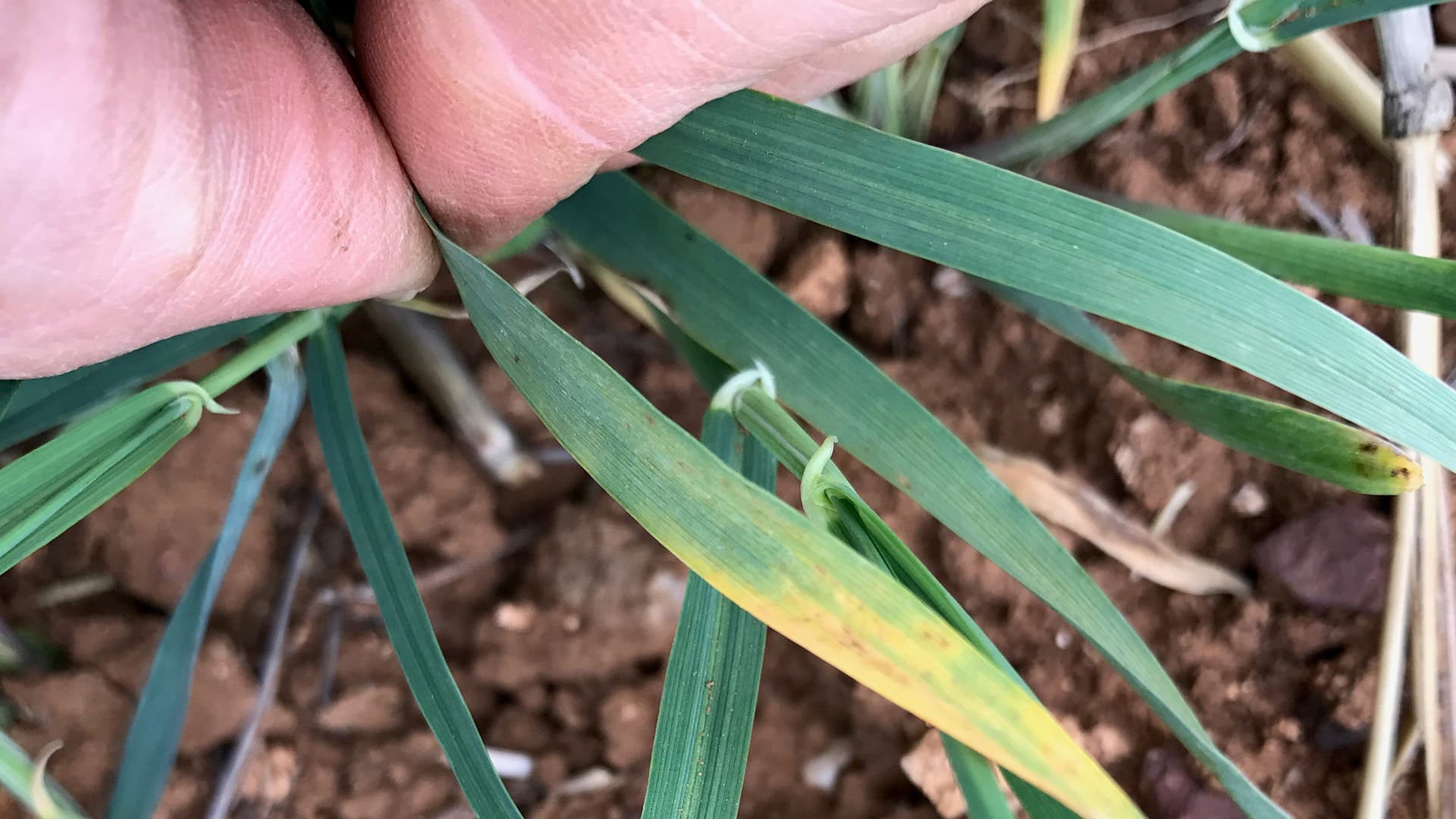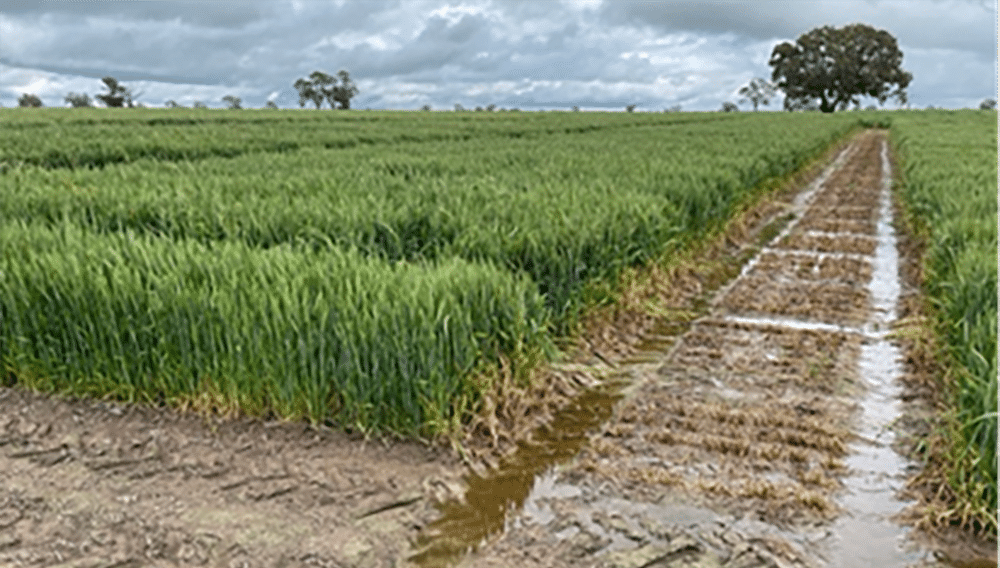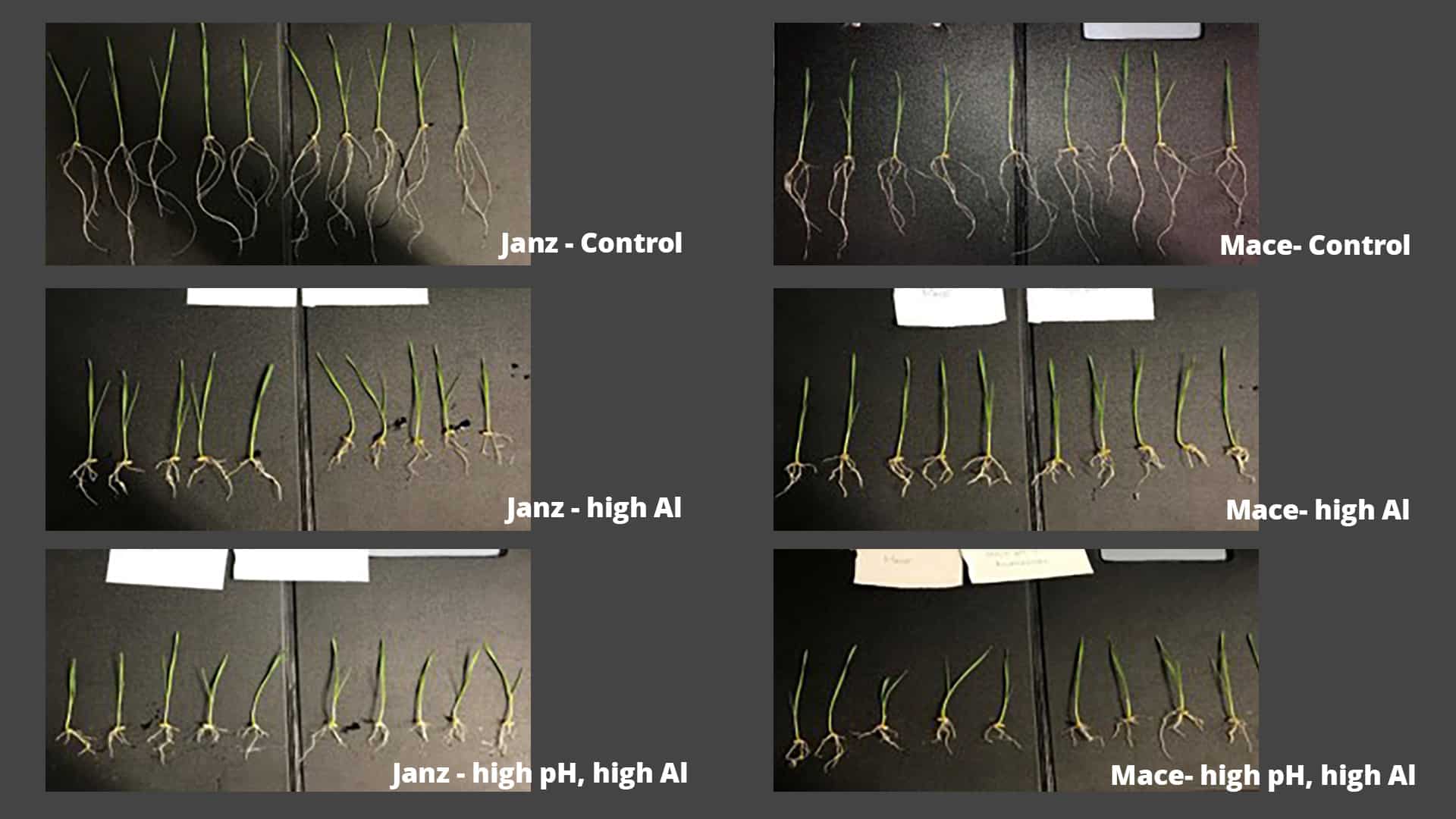START
FINISH

Summary
A trial north of Bordertown which experienced an extreme weather season in 2015 found no statistical benefit in wheat yield from the addition of liquid or granular phosphorus fertiliser when the Colwell P was greater than 16.5 milligrams per kilogram during a decile 1-2 season. This disproved claims that high levels of phosphorus improve the ability of wheat to handle frost and drought.
Background
Phosphorus fertiliser represents a significant cost for South Australian grain growers, however on soils with adequate phosphorus reserves, the response to additional P fertiliser is unclear. The application rates required for replacement levels of P are often so low that it can be difficult to evenly spread granular fertiliser.
Liquid phosphorus has been shown to be more efficiently used by crops on certain SA soils compared with phosphorus from solid forms such as MAP, and can be evenly distributed along the seed row at low rates.
Research Aims
The aim of this project was to investigate any agronomic and profitability gains with liquid injection systems on clayed sands.
The trial was designed to test the hypothesis that a low rate of granular phosphorus could be used without yield penalty when supplemented with a small amount of liquid phosphorus to maintain even distribution of phosphorus along the seed row.
The response of the crop to copper applied using injection below the seed was also tested.
In The Field
The trial was conducted at a site near Bordertown in 2015. Weather conditions during the season were difficult, with well below average rain, particularly in spring; six days with temperatures above 35-38oC during flowering; and twelve days below 0oC during flowering recorded at the nearby NVT site (Sherwood).
Due to site constraints, some of the treatments were conducted in poorer soil conditions than others.
The treatments tested were:
1) Nil fertiliser (control)
2) 8kg of granular phosphorus
3) 16kg granular phosphorus
4) 16kg granular phosphorus with 2.5kg liquid phosphorus
5) 8kg granular phosphorus with 2.5kg liquid phosphorus
The Better Fertiliser Decisions Calculator (BFDC) was used to determine the expected response from phosphorus using the Colwell test.
BFDC is a national database of available soil test-crop response calibration trials undertaken to assess the nitrogen, phosphorus, potassium and sulphur status of soils used to produce crops.
The result suggested a 90 per cent relative yield would be achievable with a Colwell P of 16.0mg/kg. Soil test results in the control averaged 16.5 Colwell with a phosphorus buffering index (PBI) of 20, indicating the base level of phosphorus was already sufficient to achieve 90 per cent relative
yield.
Results
The results of the phosphorus component of the trial showed visual differences in biomass from an early growth stage, as measured by the NDVI, with increased biomass from increasing phosphorus, however, none of the phosphorus treatments statistically increased yield over the untreated control.
This result is likely due to the low rainfall limiting grain yield combined with the adequate Colwell P level in the control.
The grain analysis showed that the control had a higher grain phosphorus percent at 0.33 per cent compared to the average of the treatments with phosphorus applications testing 0.27 per cent. Test weights, screenings and protein were not significantly different. No other significant differences in tiller counts, stem thickness, frost damage or visual symptoms were noticed between treatments.
Increasing phosphorus rates showed an increase in tissue test results at GS24 averaging 0.58 per cent P compared to 0.44 per cent P in the control. The treatments with reduced granular phosphorus supplemented with liquid injection produced same elevated tissue test results.
No statistical differences in yield was found between foliar applied copper, liquid injection of copper and a control.
Project Participants
Elders Rural Services: Adam Hancock
Kalyx Australia: Nic Amos
The Problem
The benefit of liquid injection phosphorus and copper on clayed sand is not well evaluated.
The research
Different rates of liquid phosphorus were tested near Bordertown in 2015.
More information
Adam Hancock, Elders Rural Services
P: 0427 475 254
E: [email protected]
Value for Growers
• On clayed sand north of Bordertown phosphorus applications beyond maintenance in soils between Colwell 15 – 20mg/kg with PBI 0-40 is potentially unlikely to provide an economic yield response in wheat.
• These results do not support claims that increased phosphorus fertiliser improves wheat crops’ ability to handle drought and frost.
• Differences in biomass and tissue test results from increased phosphorus did not result in an increase in yield in a decile 1-2 season.
• There was no difference in response to low rates of granular phosphorus with liquid phosphorus applied compared to high rates of granular phosphorus. However, biomass was reduced and this would result in reduced hay yield if cutting a frosted crop.
• No benefit was seen from liquid applied copper in the form of Cu sulphate applying 250g/ha, most likely due to poor season.



